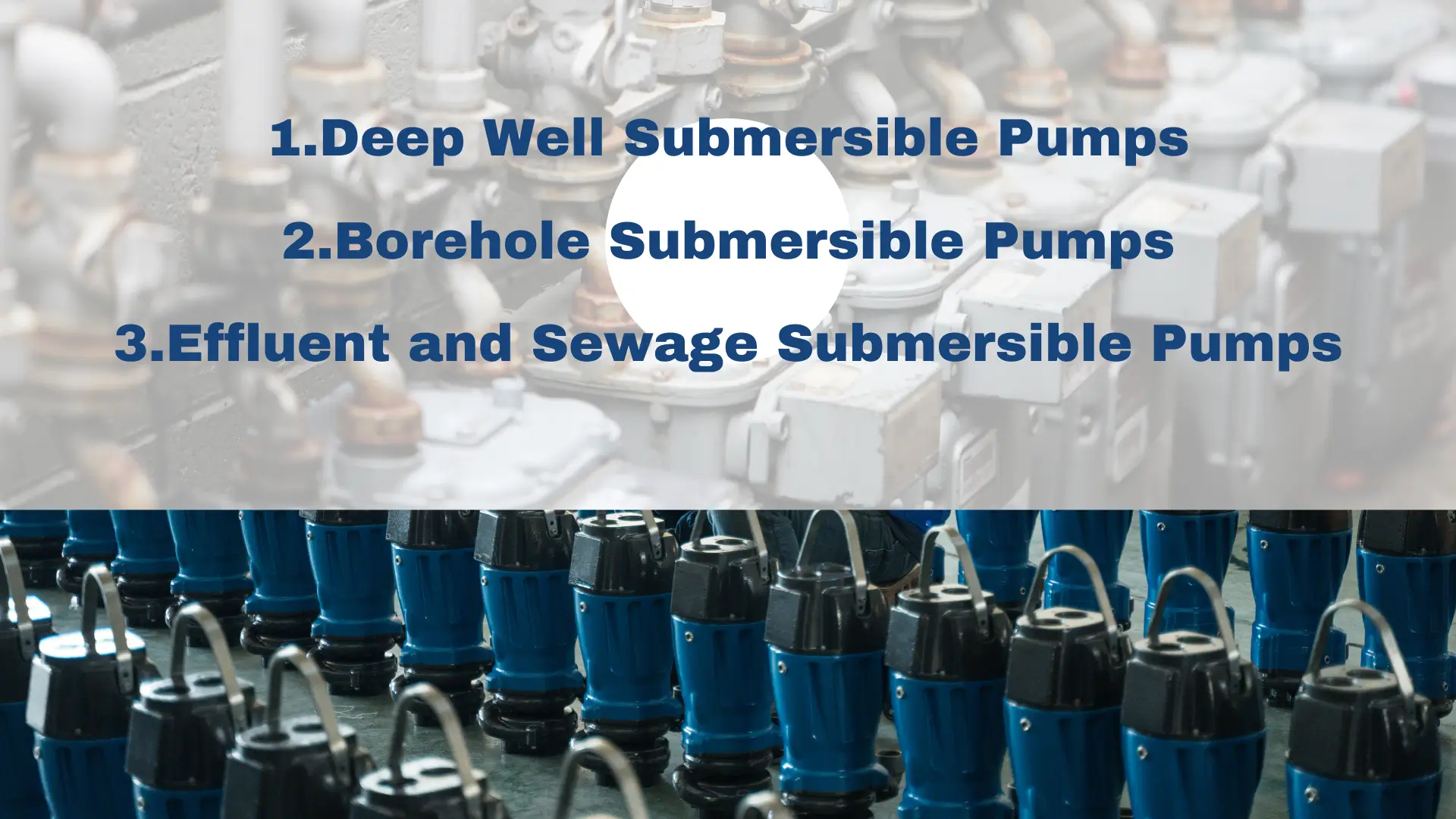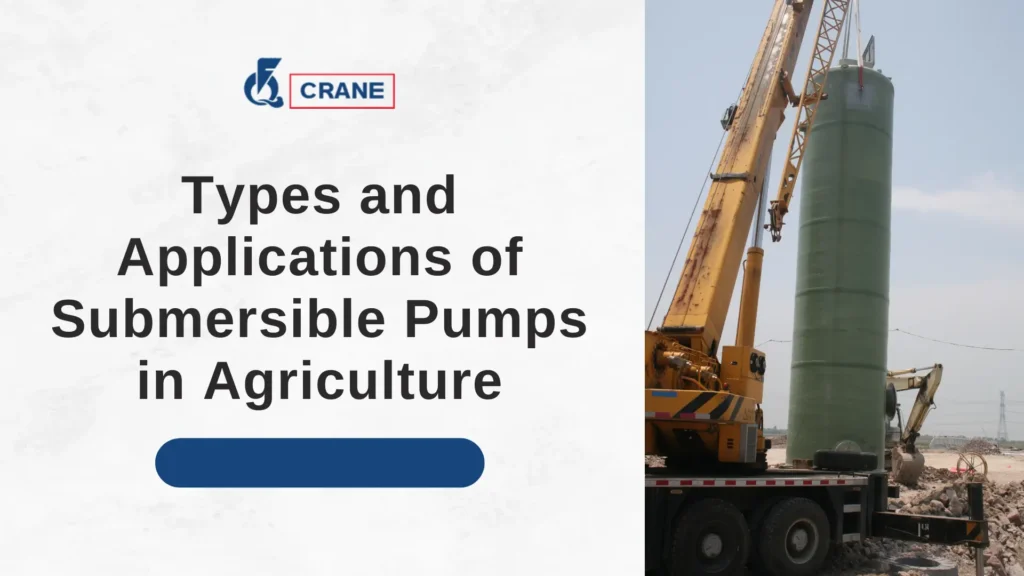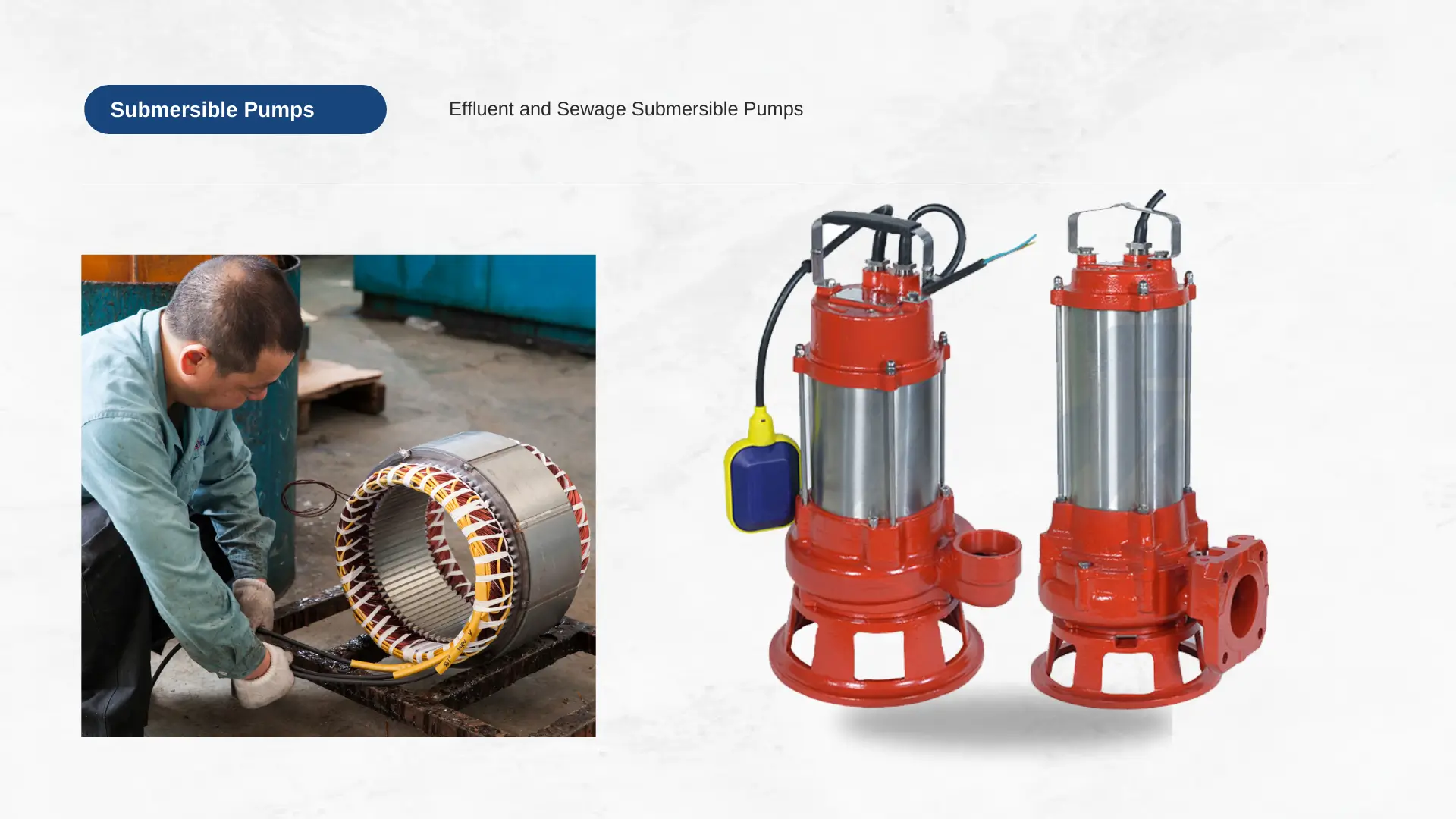The article will closely discuss types of submersible pumps, applications involving crop irrigation and aquaculture, and further uses that demonstrate their versatility in agricultural contexts.
Types of Submersible Pumps
Deep Well Submersible Pumps
Deep well pumps are submersible pumps for deep-water conditions and, as such, may become capable of raising water from more than 100 feet down from the surface. They also become very helpful on land for farming purposes where the water table is at a depth or where there is no shallow open water body nearby.
Key Features
High Capacity: It is designed to handle volumes of water, making it ideal for extensive irrigation systems.
Durability: Strong materials are used during manufacture to enable machinery to withstand the negative conditions and hence have a long service life.
Energy Efficiency: Most of them are designed to work using minimal levels of energy input; hence cheap solutions for farmers.

Borehole Submersible Pumps
Submersible pumps for boreholes have been specifically designed for narrow applications-for example, deep bores or wells that have restricted diameter entries.
Slim in design, they thus enable the effective extraction of underground water, a factor that makes them highly suitable for remote farms or rural farming localities.
Key Features
Compact Design: Their narrow profile makes fitting easy in tight spots where larger pumps cannot fit.
Versatile Applications: Diverse applications range from irrigation to potable water supplies, serving all kinds of agricultural needs
Operation Efficiency: It operates very well at sizeable depths, ensuring that water is available in a highly reliable way
Effluent and Sewage Submersible Pumps
Effluent and sewage submersible pumps are manufactured to work along with wastewater that could contain solid wastes and debris.
Although not for irrigation purposes per se, the work they do contributes greatly to environmental sustainability by handling agricultural runoff and wastewater.
Key Features
Solid Handling: Several of them can handle solids of a particular size, minimizing the pre-treatment of wastewater.
Variably Applicable: Useful in the fields for the removal of excess water or to handle runoff from livestock operations.
Durable Construction: Constructed in a way to sustain harsh conditions and corrosive materials in wastewater.
Applications of Submersible Pumps in Crop Irrigation
1. Efficient Water Supply
Submersible pumps mean water supply for irrigation is continuous, thus guaranteeing that crops obtain just the correct amount of moisture they need, especially in dry areas.
Farmers can therefore schedule irrigations to suit their needs, which also means that water could be optimally used and wastage minimized.
2. Better Yield of Crops
It is possible through the submersible pump because it maintains uniform consistency with the moisture in the soil for healthy plant development, therefore yielding maximum crops.
This has proved most advantageous in the irrigation of high-value crops that require accurate irrigation.
3. Economic Viability of Operations
Due to their efficiency, submersible pumps can save a considerable amount of money too.
They use less energy since they do not work against air pressure and since it’s possible to get water from deeper sources, storages at the surface are less needed.
Submersible Pumps for Aquaculture
Water Circulation and Aeration
This evenness of temperature is very important because abrupt changes in temperature may stress the fish and eventually lead to ill health.
These pumps will also allow higher levels of oxygenation within the water. As a result of the type of agitation occurring at the water surface, mixing by submersible pumps is conducive to higher amounts of dissolved oxygen being made available to fish, essential to metabolic and overall vitality. Wholesome oxygen levels also avoid the buildup of injurious gases, therefore creating a safer environment for the fish as well as other organisms.
Water Quality Management
Submersible pumps contribute to water quality management through facilitating the removal of waste material, uneaten feed, and excess nutrients that may promote algal blooms.
The continuous circulation and filtration of water allow it to assume the characteristic of an aquatic ecosystem that is balanced.
Good waste management practices promote not only fish health but also good farming practices that are in harmony with the environment.
A clean environment reduces the possibilities of outbreaks of diseases, hence reducing the usage of chemicals for treatment, and thus results in a much healthier fish and a more viable aquaculture operation.
Efficient Feeding Systems
To this regard, automated feeding systems have the capability of distributing the appropriate amount at the right time, ensuring that fish are well fed without overfeeding them.
Submersible pumps used in feeding systems have enabled farmers to obtain better feed conversion ratios; that is, less feed is used but more and bigger fish are realized at the end with reduced wastage.
This technology indeed increases the growth rates and contributes to feeding costs and environmental impact reduction, hence making the aquaculture operations profitable and sustainable.
Read More:
- Understanding Residential and Municipal Submersible Pumps
- Industrial and Commercial Submersible Pumps – A Comprehensive Guide
- Enhancing Agriculture with Submersible Pumps
Additional Applications of Submersible Pumps in Agriculture
Drainage Solutions
Field drainage after heavy rainfall or irrigation is crucial, for which submersible pumps prove very effective.
These prevent further accumulation of water due to which the aeration of the soil also improves, thus providing favorable conditions for development to the roots of plants.
Effective drainage ensures the farmer gets higher yields besides allowing them to plant and harvest at times that it is appropriate without delays from adverse soil conditions.
For a region experiencing heavy rain, water can either make or break a farming season.
Fertigation Systems
Submersible pumps may be installed into the fertigation systems for pumping nutrients directly into the root zones.
This kind of targeting increases nutrient uptake, ensuring that crops are provided with the elements necessary for growth.
Farmers can reduce waste and enhance efficiency by using a combination of water and fertilizer application, which helps to ensure healthier plants and higher productivity.

Livestock Water Supply
Clean and fresh water is, after all, quite an important commodity for livestock health and growth productivity.
Farmers can use such pumps to draw water out of wells, ponds, or any other source that might be nearby their location to ensure that their animals have constant access to hydration.
With a constant water supply, submersible pumps aid in keeping farm animals better because they have better growth and reproduction rates.
This will be most welcome with larger farming operations when access to water supplies might be limited.
Conclusion
Submersible pumps represent versatile and productive machinery that is bound to play a significant role in modern agriculture.
From crop irrigation and aquaculture to drainage and supplying their stock, the applications are as diverse as they are impactful.
Besides farmers trying to increase productivity and sustainability, the right submersible pump will guarantee significant benefits from an investment.
Understanding the types available and their specific uses enables agricultural professionals to know and make correct choices that help in the success of their overall operations.


